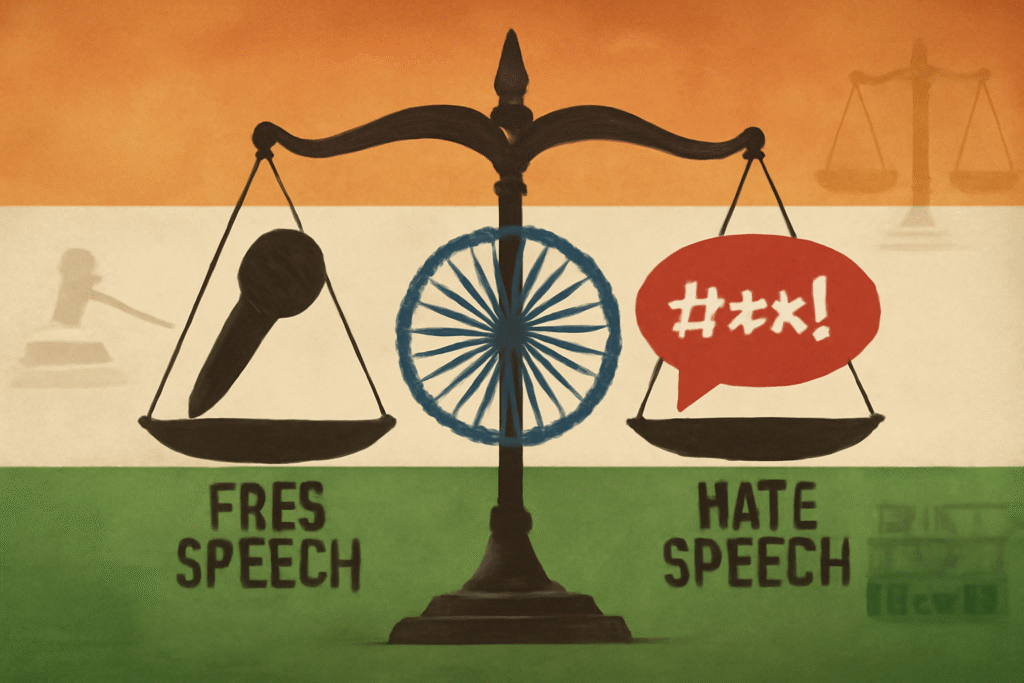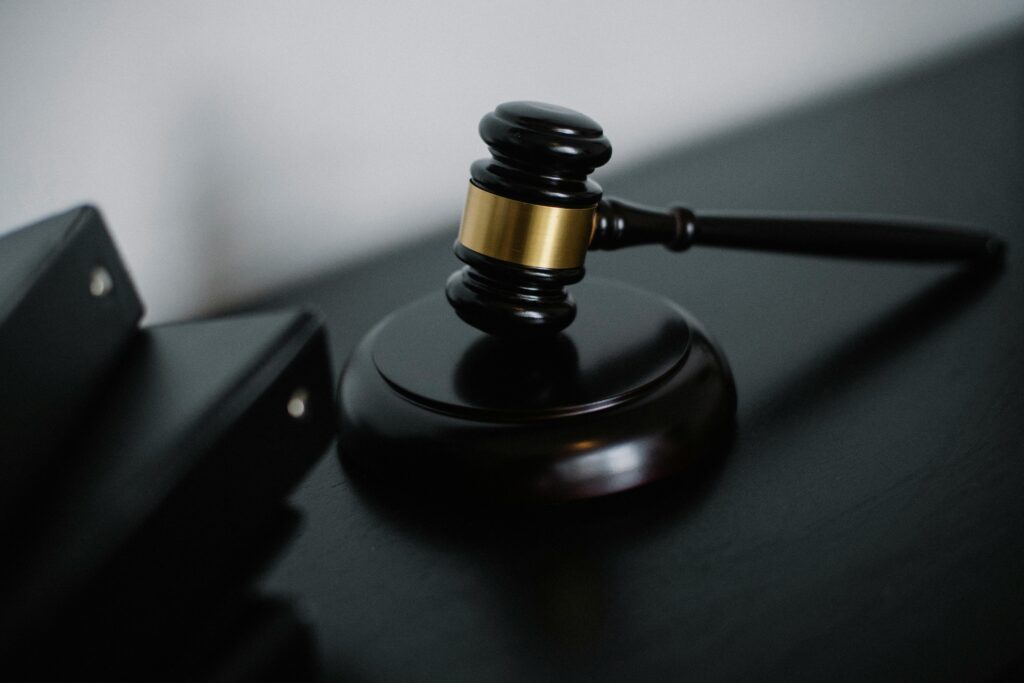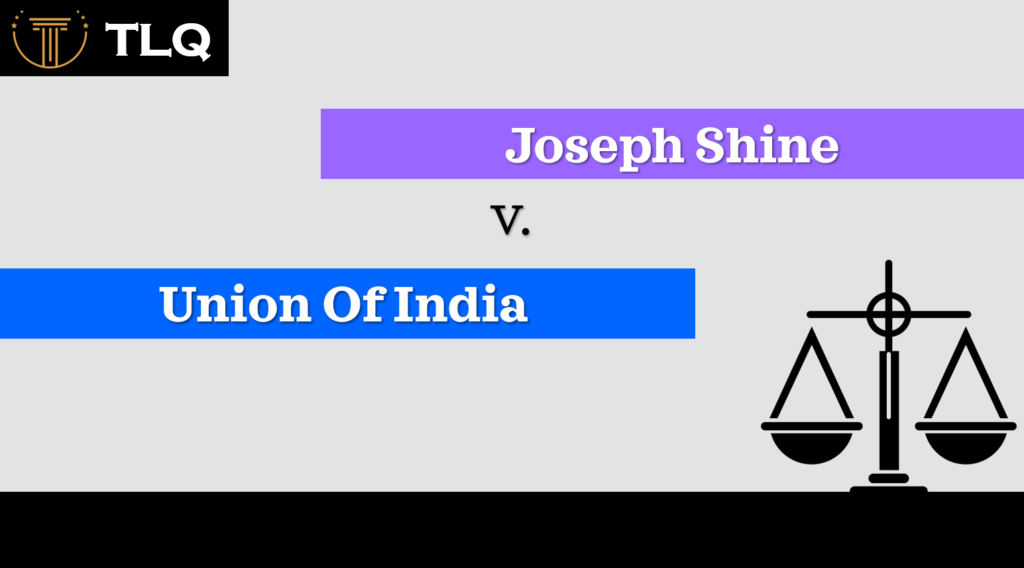Published on 12th July 2025
Authored By: Anura Lepcha
University of Engineering and Management, Kolkata
Abstract
This article delves into the intricate relationship between judicial review and the doctrine of separation of powers within the Indian constitutional framework. It traces the historical evolution of these doctrines, examines their constitutional underpinnings, and analyzes landmark judicial pronouncements that have shaped their contours. The discussion further explores contemporary challenges and debates surrounding judicial activism and overreach, concluding with a comparative perspective to underscore the uniqueness of the Indian experience.
Introduction
A well-functioning constitutional democracy is founded on the principle that power must not be concentrated in any one branch of government. To this end, the doctrines of separation of powers and judicial review are essential constitutional mechanisms that ensure accountability, rule of law, and institutional balance. The separation of powers, historically articulated by Montesquieu, advocates for the distribution of state functions among the legislature, executive, and judiciary, thereby preventing the abuse of authority. Judicial review, on the other hand, empowers the judiciary to invalidate laws and executive actions that contravene the Constitution, thus serving as a check against legislative or executive overreach.
These two doctrines are interlinked in their objective of upholding constitutional supremacy and protecting individual rights. In the Indian constitutional framework, although the separation of powers is not explicitly codified, it is deeply embedded in the structure of governance. Judicial review is not only expressly provided for under Articles 13, 32, and 226 of the Constitution but has also been recognised by the Supreme Court as part of the basic structure doctrine.
Conceptual Foundations
- Doctrine of Separation of Powers
The classical exposition of the doctrine of separation of powers can be traced to Montesquieu, who, in The Spirit of Laws, argued that liberty is most effectively preserved when the legislative, executive, and judicial powers are separated and exercised by distinct organs of the state to prevent tyranny and abuse of power. Montesquieu’s ideas drew from the British parliamentary system and the American constitutional model where institutional checks and balances were prominent.
Although absolute separation is practically infeasible in most democratic states, especially parliamentary democracies like India, the doctrine remains a guiding principle for maintaining functional autonomy and institutional balance between the branches of government.
- Judicial Review
Judicial review refers to the power of the judiciary to examine the legality and constitutionality of legislative enactments and executive actions. First established in Marbury v Madison (1803), Chief Justice John Marshall held that “It is emphatically the province and duty of the judicial department to say what the law is.”
In India, judicial review is a basic feature of the Constitution and serves as a powerful tool for upholding constitutional supremacy and rule of law. The judiciary can strike down laws and executive actions violative of fundamental rights or exceeding constitutional limitations. It is embedded in Articles 13, 32, 131- 136, 143, 226 and 227 and has been recognized as part of the basic structure of the constitution, and thus beyond the reach of even constitutional amendments.
Evolution of the Doctrine in India
- Constitutional Foundation
The Constitution of India does not expressly mention the doctrine of separation of powers, unlike the United States Constitution. However, it implicitly recognises this principle through its distinct division of functions among the three organs legislature (Articles 79–122), executive (Articles 52–78), and judiciary (Articles 124–147). The Preamble and the structure of governance, particularly the adoption of a parliamentary democracy, anticipate a system of checks and balances.
Although India does not follow a strict separation of powers, it follows a functional separation each organ performs its core functions but with some overlap. This flexibility allows adaptation to India’s socio-political context.
- Early Judicial Approach: Limited Review
In the initial years, the judiciary maintained a restrained role. In A K Gopalan v State of Madras [1950] SCR 88, the Supreme Court adopted a narrow interpretation of fundamental rights, holding that the legality of a law under Article 21 was only to be tested against the “procedure established by law,” even if such procedure was unjust or arbitrary. This reflected a phase where the doctrine of judicial review was underdeveloped, and the judiciary seldom challenged parliamentary supremacy.
- Expansion in the 1970s: Activist Phase
The phase of transformation began with Kesavananda Bharati v State of Kerala (1973) 4 SCC 225, where the Supreme Court held that Parliament’s power to amend the Constitution was not unlimited, it could not alter the ‘basic structure’ of the Constitution. Judicial review itself was held to be part of this basic structure.
This marked a watershed moment in the development of both doctrines:
- Judicial review became a constitutional shield against majoritarian excess.
- Separation of powers emerged as a part of the unamendable constitutional framework.
The expansion continued in Maneka Gandhi v Union of India (1978) 1 SCC 248, where the Court broadened the scope of Article 21, introducing the idea that “procedure established by law” must be fair, just, and reasonable. This interpretation vastly expanded the potential for judicial review of executive and legislative actions.
- Reaffirmation in the Post-Emergency Era
In Minerva Mills Ltd v Union of India [1980] 2 SCC 591, the Court further entrenched the role of the judiciary as the ultimate interpreter of the Constitution. The judgment invalidated clauses that gave Parliament unlimited amending power, stating: “The Indian Constitution is founded on the bedrock of the balance between Parts III and IV. To destroy the guarantees given by Part III in order to achieve the goals of Part IV is plainly to subvert the Constitution.”
This phase saw the clear enunciation of separation of powers, with the Court restraining legislative overreach and reiterating that the Constitution is supreme—not the legislature.
- Contemporary Phase: Dialogue and Conflict
The early 2000s and 2010s witnessed a nuanced development. The judiciary continued to exercise its power of review robustly but began stepping into areas traditionally within the executive’s domain such as policymaking.
In I R Coelho v State of Tamil Nadu [2007] 2 SCC 1, the Supreme Court ruled that even laws placed in the Ninth Schedule after Kesavananda Bharati could be reviewed if they violated fundamental rights. This reinforced the supremacy of judicial review.
However, criticism began to mount regarding judicial overreach, particularly in Public Interest Litigations (PILs). The judiciary was seen formulating guidelines on sexual harassment (Vishaka v State of Rajasthan), environmental issues, and governance reform (e.g., police reforms in Prakash Singh v Union of India).
While these interventions addressed legislative and executive failures, they raised concerns about encroachment and the dilution of separation of powers.
- Recent Trends and Institutional Balance
The striking down of the National Judicial Appointments Commission (NJAC) in Supreme Court Advocates-on-Record Association v Union of India [2016] 5 SCC 1 further highlighted the Court’s self-perception as the guardian of constitutional integrity.
At the same time, the judiciary has begun advocating institutional cooperation. In Common Cause v Union of India (2018) 5 SCC 1, regarding euthanasia, and Shayara Bano v Union of India (2017) 9 SCC 1, regarding triple talaq, the Court encouraged legislative action while ensuring protection of fundamental rights.
This phase reflects a maturing constitutionalism where the judiciary walks a tightrope between activism and restraint, between the imperatives of justice and the sanctity of democratic processes.
Judicial Review and the Indian Constitution
- Judicial Review as Basic Structure
The Supreme Court in Kesavananda Bharati v State of Kerala (1973) cemented judicial review as part of the “basic structure doctrine”. The Court held that Parliament’s power to amend the Constitution under Article 368 does not extend to altering its basic features.
Further strengthening the doctrine, Minerva Mills Ltd v Union of India (1980) declared that “limited amending power” and “judicial review” are part of the Constitution’s inviolable core. The judgment emphasized the judiciary’s role in maintaining constitutional equilibrium.
- Safeguarding Fundamental Rights
Judicial review plays a crucial role in protecting Fundamental Rights enshrined in Part III. In Maneka Gandhi v Union of India the Court expanded the interpretation of Article 21 to include the principles of natural justice, thereby broadening the scope of judicial review against executive actions.
In Shreya Singhal v Union of India, the Court struck down Section 66A of the Information Technology Act, 2000, as unconstitutional, reaffirming the centrality of free speech and judicial oversight.
Interface between Judicial Review and Separation of Powers
- Judicial Review as a Check on Legislative and Executive Powers
Judicial review acts as a constitutional safeguard against the arbitrary exercise of power by the other branches of government. In Minerva Mills v Union of India, the Court reiterated that judicial review is integral to the Constitution’s basic structure and ensures that the legislature does not transgress its constitutional limits.
Similarly, in Indira Nehru Gandhi v Raj Narain, the Court invalidated Clause 4 of Article 329A inserted by the 39th Amendment, holding that it violated the basic structure by curbing judicial power to adjudicate election disputes involving the Prime Minister.
These cases underscore that judicial review ensures that the legislature and the executive remain within the bounds of constitutional propriety.
- Doctrinal Boundaries and Institutional Restraint
The doctrine of separation of powers is often invoked to criticize judicial activism or overreach, where courts are perceived to be encroaching upon the domain of policy-making, traditionally vested in the legislature or executive.
In Divisional Manager, Aravali Golf Club v Chander Hass, the Supreme Court observed that judges must refrain from encroaching upon executive or legislative functions under the guise of judicial review. Similarly, State of Himachal Pradesh v Umed Ram Sharma highlighted the need for judicial restraint when the policy decisions of the State are under scrutiny.
Thus, while judicial review is crucial, it must be exercised within doctrinal limits to preserve the integrity of the separation of powers.
- Expanding Role: Public Interest Litigation and Judicial Activism
The Indian judiciary has significantly expanded its role through Public Interest Litigations (PILs), particularly since the 1980s. This has brought about a broader conception of judicial review, extending to policy directives, environmental regulations, and social welfare.
In MC Mehta v Union of India, the Supreme Court issued detailed directives concerning environmental regulation and vehicular emissions. Similarly, in Vishaka v State of Rajasthan, the Court issued guidelines to prevent sexual harassment at workplaces in the absence of parliamentary legislation.
These cases represent instances where judicial review has filled legislative voids, arguably stretching the limits of judicial power but also reinforcing constitutional rights and public welfare.
Comparative Jurisprudence
- United States
The US follows a rigid application of separation of powers, with judicial review being a firmly established feature since Marbury v Madison. However, even in the US, courts have been criticized for judicial activism, especially when interpreting rights expansively or interfering with executive decisions, such as in Roe v Wade or Bush v Gore.
- United Kingdom
The UK, with its parliamentary sovereignty, traditionally does not have a codified constitution and hence a limited scope of judicial review. However, after the Human Rights Act, 1998, UK courts have exercised review powers under the lens of human rights, albeit with parliamentary deference.
- European Union
The Court of Justice of the European Union (CJEU) has increasingly assumed judicial review powers, particularly in safeguarding the principles of subsidiarity and proportionality within the EU legal order, balancing member states’ legislative authority and supranational norms.
Challenges and Critiques
- Judicial Overreach
Critics argue that the judiciary, especially in India, sometimes exceeds its constitutional role by entering the realm of policy-making or administration. This concern is prominent in cases where courts issue directions relating to environmental policy, economic decisions, or even religious practices.
For instance, in Shreya Singhal v Union of India, while the Court rightly struck down Section 66A of the IT Act for violating free speech, its observations on intermediary liability significantly altered internet regulation.
- Democratic Accountability
Judicial review, by its nature, lacks direct democratic accountability, raising concerns when unelected judges overturn laws passed by democratically elected legislatures. While necessary for constitutional supremacy, it creates tensions between democracy and rule of law.
- Institutional Constraints
Judicial review also suffers from limitations such as case backlog, lack of expertise in technical fields, and delay in pronouncement and enforcement of decisions. These practical concerns challenge the effectiveness of the judiciary as a constitutional guardian.
The Way Forward: Toward a Harmonious Balance
To maintain constitutional equilibrium, it is essential to promote institutional dialogue rather than confrontation. Judicial review must be exercised with restraint, principled reasoning, and institutional respect. At the same time, the legislature and executive must adhere to constitutional mandates, recognizing the judiciary’s role as the final interpreter of the Constitution.
Promoting mechanisms like constitutional benches, structured guidelines for PILs, judicial accountability, and legislative responsiveness can ensure a balanced interplay between judicial review and separation of powers.
Conclusion
The doctrine of separation of powers and judicial review are two foundational pillars of a constitutional democracy. While the former maintains institutional independence and functional specialization, the latter ensures that constitutional limits are not transgressed. In India, the judiciary has emerged as an active participant in governance, walking a fine line between constitutional fidelity and democratic intervention.
A harmonious constitutional order requires that judicial review be used to defend the Constitution, not undermine the autonomy of other branches. Respect for institutional roles, coupled with constitutional morality and judicial statesmanship, will ensure that the balance between power and accountability is preserved in the years to come.
References
- Montesquieu, The Spirit of Laws (1748)
- Marbury v Madison 5 US (1 Cranch) 137 (1803)
- Kesavananda Bharati v State of Kerala AIR 1973 SC 1461
- Minerva Mills Ltd v Union of India AIR 1980 SC 1789
- Indira Nehru Gandhi v Raj Narain AIR 1975 SC 2299
- Divisional Manager, Aravali Golf Club v Chander Hass (2008) 1 SCC 683
- State of Himachal Pradesh v Umed Ram Sharma (1986) 2 SCC 68
- MC Mehta v Union of India AIR 1987 SC 1086
- Vishaka v State of Rajasthan AIR 1997 SC 3011
- Shreya Singhal v Union of India (2015) 5 SCC 1




